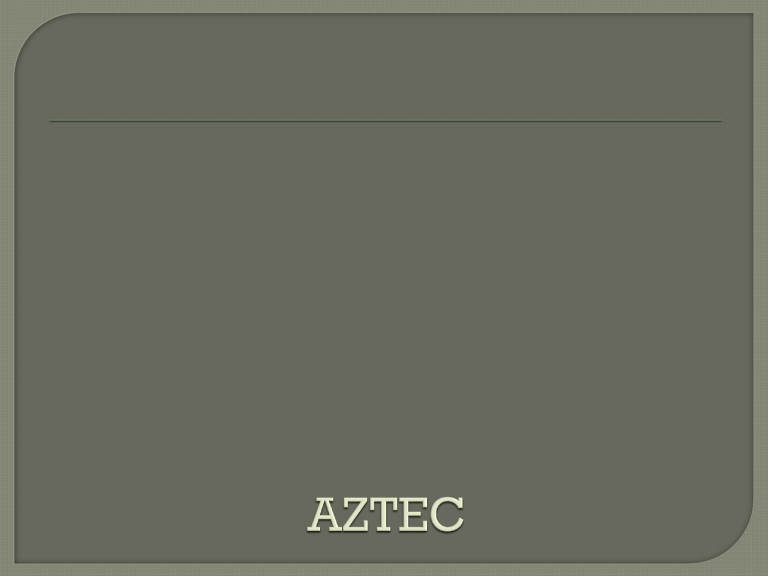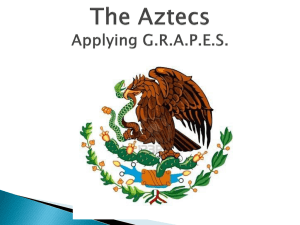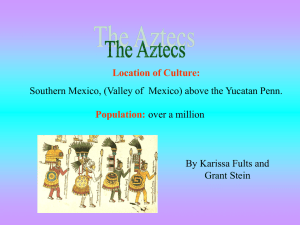aztec kevin and mark

Aztec schools offered a formal system of education. Every child had to attend, including
girls and slaves. School was mandatory and free. Teachers were highly respected.
School was tough. There was no recess or time to relax in school. But all schools included instruction in song and in dance, not because it was a beautiful art, but because songs and dances were important to religious festivals.
There were three different schools. One school was for girls. Two schools were for boys.
Girls learned about religion. They learned how to cook, sew, weave, and how to care for their children.
One school was for the nobles, and sons of wealthy traders and merchants. This school taught law, writing (hieroglyphics), medicine, engineering and building, interpretations of dreams and omens, and self-expression. Students were taught how to speak well. They also learned details of their history and of their religious beliefs.
This was a tough school. The boys were humiliated and despised to toughen them up.
One school was for the commoners. Its main goal was to train warriors and farmers.
Unlike the school for nobles’ sons, this school was pretty peaceful. Boys had to sleep under skimpy blankets. They were given hard bread to eat. But that was about it.
Like the school for nobles' sons, this school taught history, religion, manners, correct behavior, and important rituals, along with singing and dancing.
Around 1400 CE, the Aztec government began conquering neighboring tribes. The Aztec population had grown. They needed many things to manage their growing population. They needed new cities to house their population.
They needed new lands to feed their population.
They needed new captives to feed their hungry gods. Schools needed to be run. Storehouses needed to be filled. Temples needed to be built.
The government had its hands full trying to satisfy all these needs.
War was the answer. When the Aztecs conquered a tribe, they demanded tribute in the form of food, clothing, precious stones, building supplies, and captives. The first four the Aztecs kept for themselves. The last they gave to their gods. Other tribes hated and feared the
Aztecs. Sometimes, they simply ran away in fear rather than fight.
The Aztecs had an emperor, a king who ruled over all the people. The emperor lived in the imperial palace in the capital city of Tenochtitlan. The palace was huge.
It even had its own zoo. The ground floor of the palace housed government offices and the shops of the most talented craftsman in the Aztec empire
As the Aztec empire grew, under the direction of government officials, Aztec engineers built many fine cities. A noble family controlled each city. Although the noble family was supposed to assist the emperor, the truth is that each noble family pretty much ran things in their own city the way they wanted. Thus, the
Aztecs, like the Mayas, were governed by city-states.
With their own people, the Aztec rulers were quite severe. Aztec courts decided on the punishment those who broke the law would receive. Drunkenness was the worse crime. The punishment for being drunk was death. Thieves were put to death. Laws were tough, and they were written down. Codices warned of the punishment you would receive for breaking the law.
The Aztecs had an interesting law. Once, and only once, you could confess your crime to the priests of Tlazolteotl and you would be forgiven. No punishment could be given to you. Timing was everything. You could only do this once. And you had to do it before you were caught. If evidence came to light after you confessed, you were safe.
You had already been excused from punishment for that crime. However, if you ever committed other crime, you would be punished to the full extend of the law. Aztec laws were very harsh.





